Tibet: Mystery Mannequins
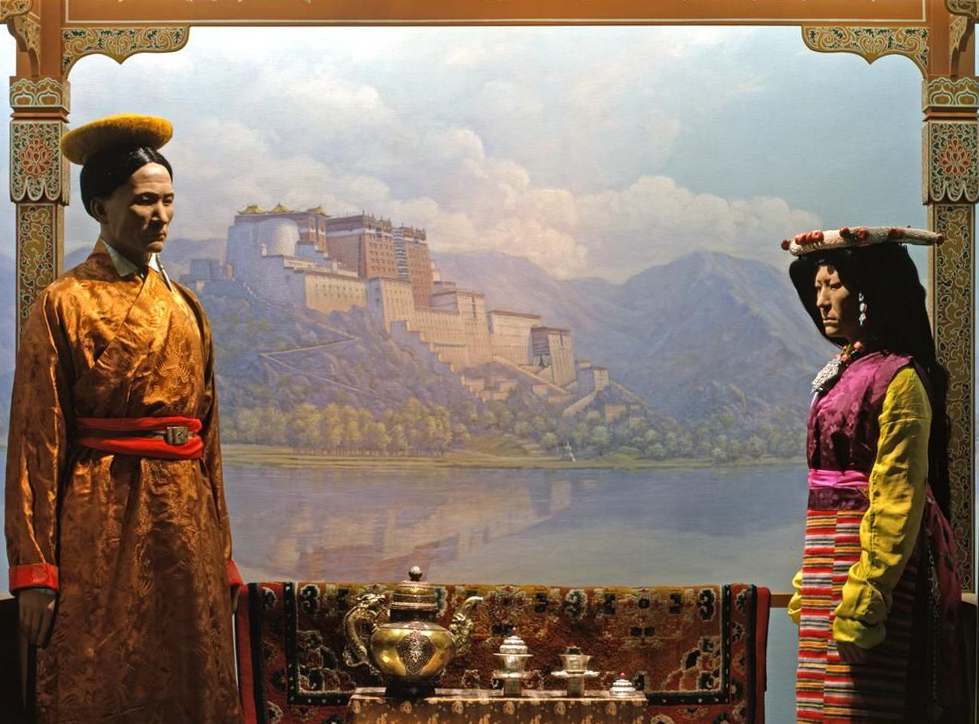
AMNH Research Library Archives photos – ptc-2308
Who are these mannequins modeled after?
That is the mystery. Unlike most mannequins in the Hall of Asian Peoples, the Museum does not know who modeled for these figures, or who made them. In fact, the models might have not been Tibetan at all. Despite their mysterious origins, the mannequins remain on display. Is their ability to draw attention to the Tibetan exhibit more valuable than their questionable accuracy?
Were these the original mannequins?
The mannequins pictured here stood in AMNH’s “Tibetan Alcove” until the 1960s. Although there is no proof that these earlier mannequins are the ones currently on display in AMNH’s Gardner D. Stout Hall of Asian Peoples, museums have historically reused materials from their previous exhibits. In the 1930s, when the alcove first appeared, foreigners rarely visited Tibet, and few, if any, Tibetans were in New York. It is unlikely that Tibetans modeled for these mannequins, so who were they based on?

AMNH Research Library Archives photos – K12953
Could their origin story be based in photography?
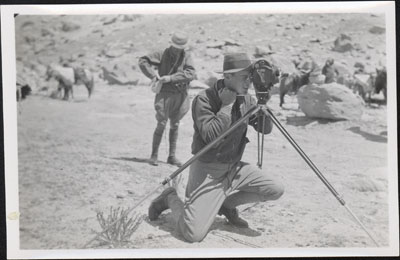
Courtesy of the Pitt Rivers Museum
In the 1930s, foreign photographers began to enter Tibet, typically through invitation by high-ranking nobility. The mannequins’ poses and costumes are reminiscent of images taken at that time, although they have tense facial expressions that we don’t see in candid shots. It is possible they are based on studio images—equipment such as big box cameras required sitters to remain very still, limiting their expressiveness and recalling the stiffness of the mannequins in the display.
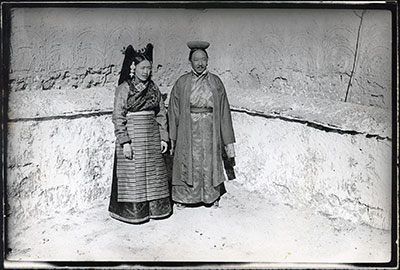
Courtesy of the Pitt Rivers Museum
Kyibu Wangfu Norbhu and His Wife by: Frederick Spencer Chapman (1936-1937)
The couple in this photograph are dressed and posed like the pair on exhibit, but with more relaxed, happier expressions. Could this photograph, or one of the many like it, have been the model for the mannequins? There is no clear answer.
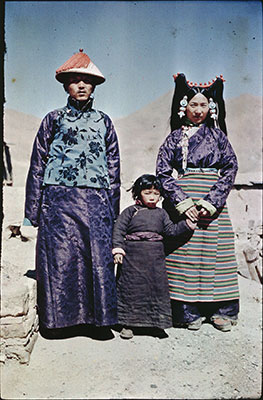
The Tibet Album. “Tendong Dzongpon and family” 05 Dec. 2006. Courtesy of the Pitt Rivers Museum. http://tibet.prm.ox.ac.uk/photo_1998.157.89.html.
Like many Tibetans, Tendong Dzongpon and his family were willing to pose for pictures. By working with foreign photographers, they exercised some control over the version of Tibet seen by outsiders.
Is there a lake in front of the Potala Palace?
The background painting in the “Nobles of Lhasa” diorama depicts Potala Palace with a gleaming lake in front of it. However, in reality, the lake is located behind the palace. The front of Potala Hill was the site of Zhol Village until it was demolished in the 1980s; its name means “below” in Tibetan and refers to a village or town located at the base of a mountaintop palace.
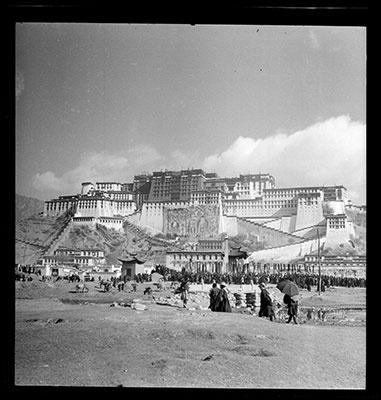
The Tibet Album. “Potala and crowds in the Sho area at Sertreng ceremony” 05 Dec. 2006. Courtesy of the Pitt Rivers Museum. http://tibet.prm.ox.ac.uk/photo_2001.59.5.36.1.html.
The misidentified lake was likely inspired by water from snow melt that collects in front of the Potala Palace during the spring and summer.
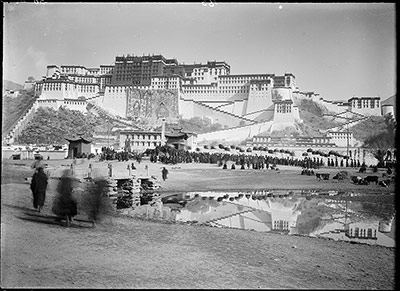
The Tibet Album. “Potala with silk banners during Sertreng procession” 05 Dec. 2006. Courtesy of the Pitt Rivers Museum. http://tibet.prm.ox.ac.uk/photo_1998.285.188.1.html.
The Potala Palace, the Dalai Lama’s winter residence since the 7th century, represents Tibetan Buddhism and its prominent position in Tibet’s traditional administration. The palace used to contain thousands of diverse cultural relics, but they were removed in recent years, turning a once potent symbol of Tibetan religious belief and culture into what some regard as a ‘hollow shell.’
References
Harris, Clare. 2012. The Museum on the Roof of the World: Art, Politics, and the Representation of Tibet. Chicago: University of Chicago Press.
Harris, Clare. 2016. Photography and Tibet. Exposures. London: Reaktion Books. https://search-ebscohost-com.ezproxy.cul.columbia.edu/login.aspx?direct=true&AuthType=ip&db=nlebk&AN=1429305&site=ehost-live&scope=site.
https://data.library.amnh.org/archives-authorities/id/amnhc_2000332
The Tibet Album. “Tendong Dzongpon and family” 05 Dec. 2006. The Pitt Rivers Museum. http://tibet.prm.ox.ac.uk/photo_1998.157.89.html.

